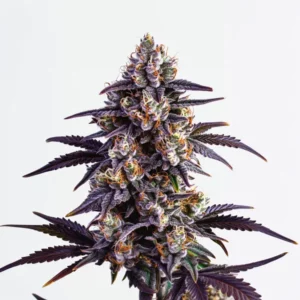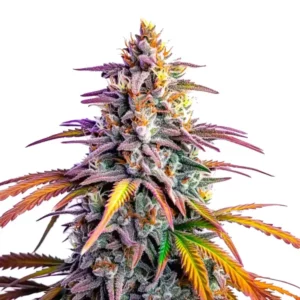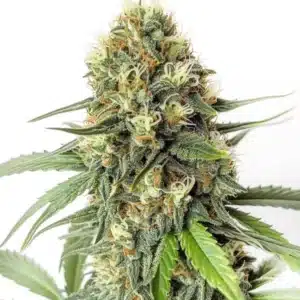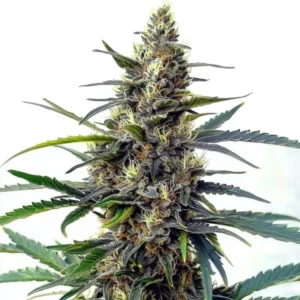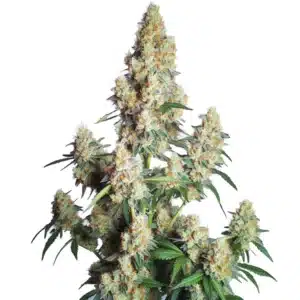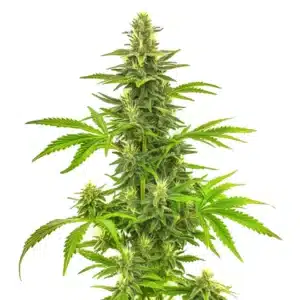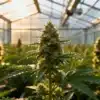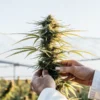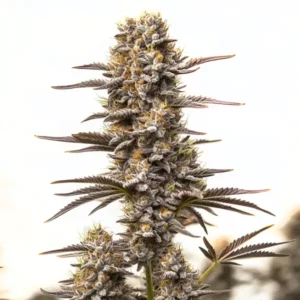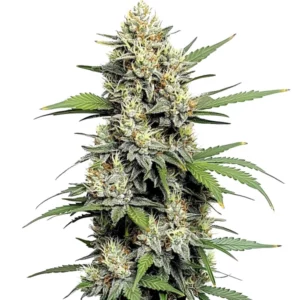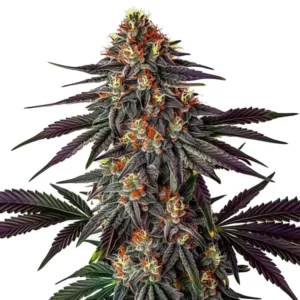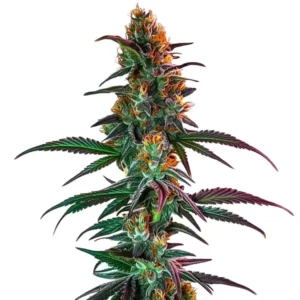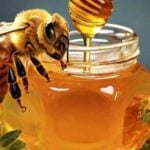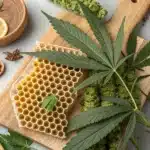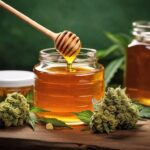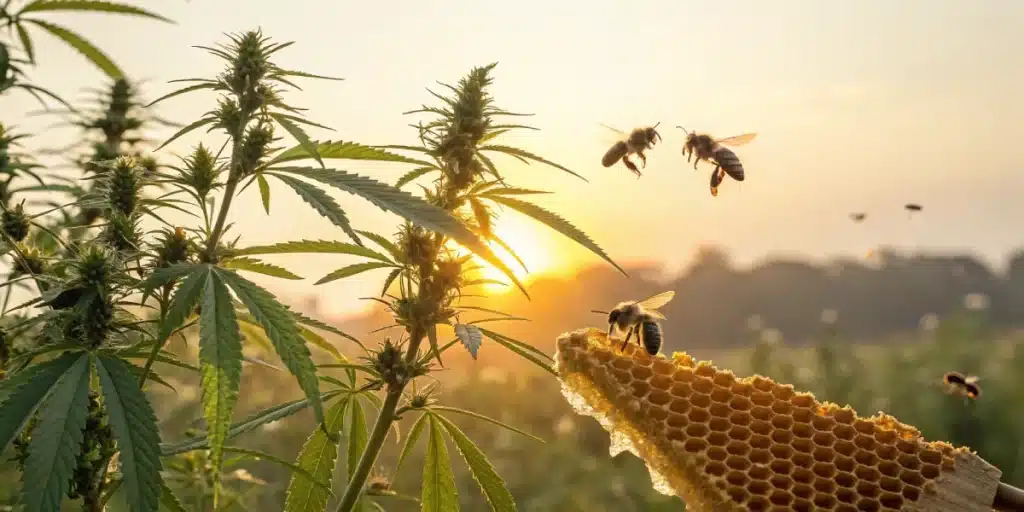
Canna Bees Honey: A Sweet Fusion of Nature and Cannabis
What is Canna Bees Honey?
Definition and Origin
Canna bees honey combines traditional honey with trace cannabinoids from hemp blossoms. Beekeepers position hives near legal hemp fields. As bees forage, they gather nectar and pollen carrying subtle plant compounds. Producers harvest raw honey that naturally contains these elements, creating an infusion that feels both familiar and novel.
Artisans first developed this honey after the 2018 Farm Bill legalized hemp farming in many regions. Small-scale operations in Colorado and California led the way, experimenting with hive density and bloom periods.
Recommended Strains
Motor Breath
|
|
THC | 30% - 33% (High) |
|
|
Type | Feminized |
|
|
Yield | Medium |
|
|
Phenotype | 70% Indica / 30% Sativa |
Motor Breath x Honey Drop
|
|
THC | 24% - 26% (High) |
|
|
Type | Feminized |
|
|
Yield | Medium |
|
|
Phenotype | 70% Indica / 30% Sativa |
How It Is Produced
Producers start by selecting hemp varieties rich in terpenes and low in THC. They place managed hives at the edge of flowering fields during peak bloom. This is effective because the cannabis plant is one of the most prolific pollen producers, and its pollen can travel far through the air. Bees, in turn, are among the best insects for transporting pollen due to the electrostatic charge on their bodies. Honey bees visit hemp blossoms alongside wildflowers, gathering nectar that later transforms in the hive.
After extraction, honey undergoes gentle filtration to remove debris while preserving cannabinoids and terpenes. Some makers then decarboxylate additional hemp extract and blend it into the honey for a more uniform product. Finally, they bottle this blend in light‑blocking jars. Quality labs test each batch for cannabinoid content and purity.
Unique Qualities Compared to Regular Honey
This honey variant offers earthy, herbal notes that differ from the floral sweetness of standard honey. Tasters describe hints of pine and citrus layered over classic flavors. The texture often feels creamier on the palate. Nutritionally, it contains the same antioxidants and enzymes found in raw honey, along with trace cannabinoids and terpenes.
Promos & Deals
The Function of Cannabis in Honey Production
How Cannabis Influences Flavor
Hemp terpenes play a crucial part in shaping this honey’s taste profile. Terpenes like myrcene add earthy undertones, while limonene offers bright citrus notes. By adjusting bloom timing and hive placement, artisans craft signature batches that cater to diverse palates.
Impact on Nutritional Properties
This honey retains the vitamins, minerals, and enzymes found in raw honey. In addition, trace cannabinoids and terpenes may support mild antioxidant activity. Early research hints that small amounts of these compounds could influence inflammation pathways. Beyond added antioxidants, hemp compounds interact with honey’s natural sugars to offer a slower glycemic response in some people.
Why Honey is an Effective Carrier
The reason honey works so well as an infusion base lies in chemistry. Cannabinoids like CBD and THC bind very easily on a molecular level to sugars and fatty materials like oils and butters. Since honey is primarily sugar, it acts as an excellent natural carrier for these compounds. This is also why so many popular cannabis edibles are sweet or rich in fats, these ingredients are perfect for delivering the active components of the plant effectively.
Differences from Traditional Honey
Bees visiting hemp fields collect a unique nectar blend. As a result, this honey carries a distinct chemical fingerprint. Producers rarely heat it, preserving delicate cannabinoids. Traditional honey often tastes purely floral or fruity. In contrast, this infusion balances sweetness with subtle herbaceous notes.
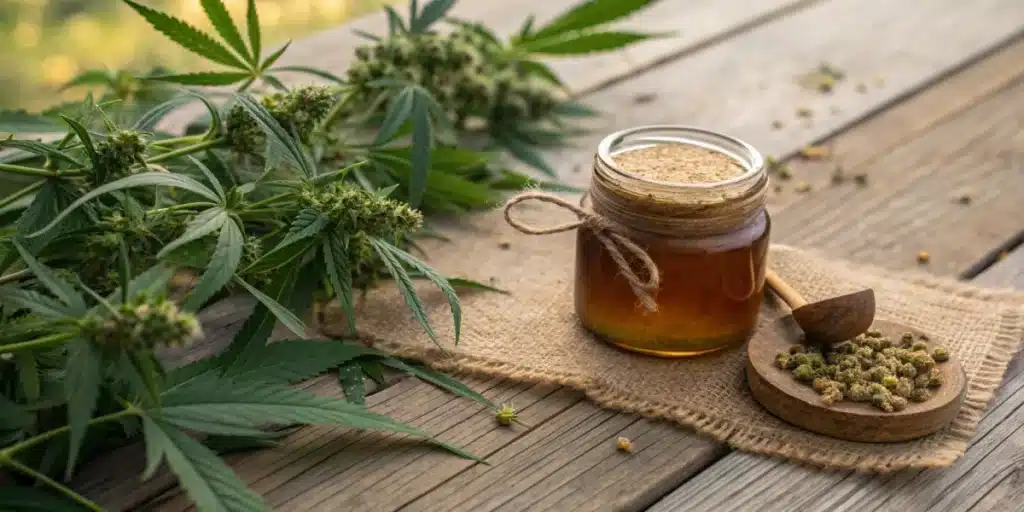
Health Benefits and Culinary Uses
Honey remains a rich source of antioxidants. When paired with trace cannabinoids, it may offer added protective benefits. Many users turn to this honey as a natural sweetener that doubles as a mild botanical supplement. Cannabinoids like CBD interact with the body’s endocannabinoid system. Though the levels in honey remain low, regular use might support relaxation and stress relief. In addition, honey itself soothes sore throats and aids immune responses.
Creative Uses in Recipes
Chefs drizzle it over yogurt or fresh fruit. Its balanced sweetness works well in salad dressings and marinades. Mixologists use it in craft cocktails, and bakers can swap it for sugar in quick breads to add moisture and depth.
Market Trends and Consumer Interest
In recent years, demand for hemp‑infused products has surged. Consumers cite curiosity and a desire for mild botanical experiences. Surveys show that millennial and Gen Z shoppers drive this trend, seeking natural alternatives to processed sweeteners. Organic certification has become a key selling point, and innovation has spurred a variety of infused offerings beyond basic honey. Consumer reviews often praise the smooth texture and balanced herbal flavor.

FAQs about Canna Bees Honey
What exactly is canna bees honey and how is it made?
Canna bees honey blends raw honey with hemp‑derived compounds by placing hives near flowering hemp or stirring in decarboxylated extract. Producers harvest, filter, and test each batch for purity and consistency, ensuring it retains natural enzymes and trace cannabinoids for a unique sweetener.
Are there any special health benefits of canna bees honey?
This specialty honey provides classic antioxidants and enzymes plus trace terpenes and cannabinoids that may support mild relaxation and immune response. Its natural sugars deliver energy without harsh spikes, making it a versatile sweetener with added herbal perks in every spoonful.
Where can I purchase authentic canna bees honey?
You can find genuine jars at farmers markets, gourmet food shops, and licensed hemp retailers. Many online stores specializing in artisanal bee products stock it, often alongside lab reports. Look for clear labeling and third‑party testing to confirm authenticity and cannabinoid levels.


